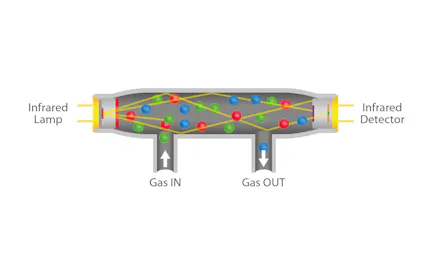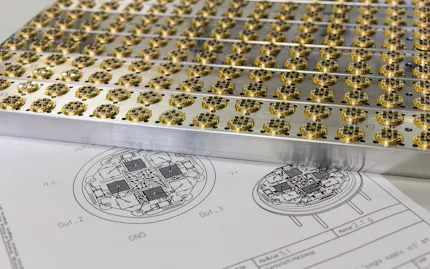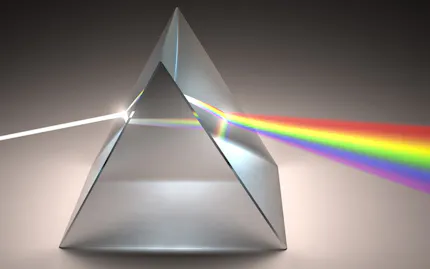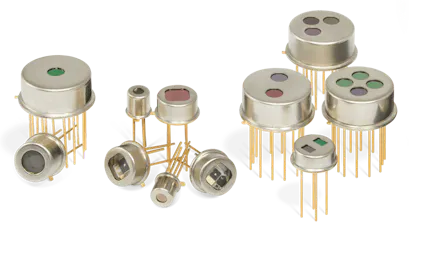Sensor Technology
Sensor Technology is a technical science that describes the acquisition of measured values by means of sensors and their conversion into electrical or optical output signals for effective processing. In addition to the transducer for converting the physical or chemical input signals, sensors often contain signal pre-processing as well for an interference-free, partially standardized interface to the downstream device electronics including power supply.Radiation sensors are used to detect particles or electromagnetic waves. Two principles are particularly suitable for the latter: The generation of charge carriers in semiconductors through the absorption of radiation quanta and the temperature change of an absorption layer through the incident radiation. The first principle is also called the internal photo effect and used, for example, in photodiodes. The second is the basis of thermal sensors. The temperature change is converted here into electrical charges or voltages in a temperature-sensitive element. Thus, for the thermopile, a voltage proportional to the temperature difference between the cold and warm side is generated (Seebeck effect).
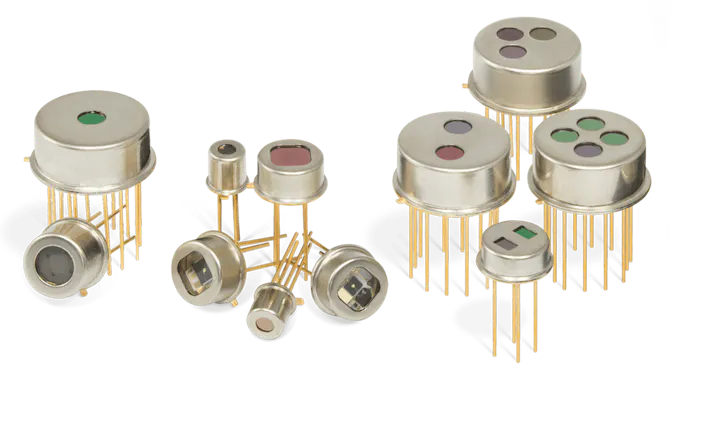
The pyroelectric infrared sensors from InfraTec, also called pyroelectric detectors, can detect the electromagnetic radiation (UV, VIS, IR, THz) that hits them and measure their intensity. When the radiation hits, the pyroelectric crystal heats up and positive electrical charges occur. Without radiation, the crystal cools down and negative charges are generated.
However, the charges are very small. Before they can balance out again through the final internal resistance of the crystal, extremely low-noise and low leakage current field-effect transistors (JFET) or operational amplifiers (OpAmp) convert the charges to a signal voltage.
Pyroelectric sensors are often used in gas analysis, flame detection as well as in spectroscopy and pyrometry.
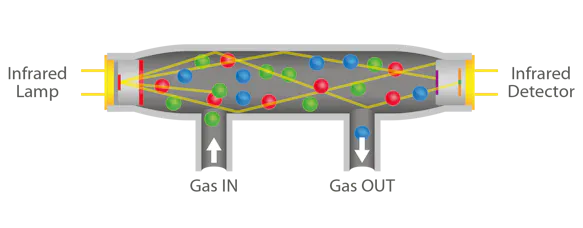
Pyroelectric Detectors for Gas Sensor Technology
For gas sensor technology one can make use of the fact that the molecular vibrations of many chemical compounds have fundamental oscillations in the infrared wavelength range and therefore absorb IR radiation. Each of these compounds has a characteristic absorption spectrum.
An NDIR (Non Dispersive IR) gas analyser consists of an electrically or mechanically modulated IR source, a gas cell and usually a pyroelectric detector. An electronic evaluation unit uses the signal voltage to calculate the gas concentration. InfraTec offers a large number of standard IR narrow band filters (narrow band pass - NBP) which are optimally matched to the absorption properties of the gas to be measured. These filters are already integrated into the cap of the pyroelectric detector and facilitate the development of equipment for gas analysis.
Areas of Application for Gas Sensor Technology
Pyroelectric detectors have a very wide range of applications in gas sensors. Often they protect the environment or even human life! By measuring exhaust gases in industrial plants or measuring leaks on gas pipelines, countermeasures can quickly be taken in the event of malfunctions. Through the detection of toxic or flammable gases, it is possible to prevent poisoning or explosions in mining worldwide. Pyroelectric IR detectors are also indispensable in medicine. Thus, the function of the lungs can be analysed by measuring CO
In addition, there are many other areas of application for InfraTec detectors. Thus, for example, in biogas analysis for determining the quality of coal, the health of plants and much more.

Would You Like to Know More?
It is not unusual for tasks to be associated with special requirements. Discuss your specific application needs with our experienced engineers, receive further technical information or learn more about our additional services.
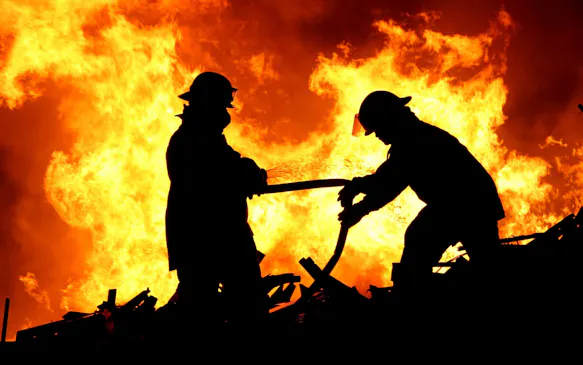
Pyroelectric Detectors for Flame Sensor Technology
In flame sensor technology pyroelectric detectors recognize radiation from burning gases, liquids or solids and can identify them using their characteristic IR spectrum. The typical spectral radiation of burning organic materials such as wood, natural gas, oil or plastic is recorded. Two independent criteria of a flame are evaluated in order to rule out a false alarm from the sun or other intense light sources (e.g. sun or welding arc):
An open flame (in contrast to solar radiation) is characterized by a flicker frequency between 1 and 5 Hz.
In addition to the combustion gas of hydrogen H
2 O, a hydrocarbon flame also produces that of carbon CO and CO2 . Their emission bands are in the infrared spectral range between a 4.0 and 4.8 µm wavelength. In order to obtain a high signal, wide IR bandpasses are used as detector windows, which include both the radiation emission of CO2 and CO.
Fields of Application in Flame Sensor Technology
Everyone knows the inexpensive smoke alarms that hang in many private apartments. These prove very useful for small rooms, in which it is better to warn once time too much. If, however, flames are detected over long distances, or outside rooms or large halls have to be monitored, then pyroelectric IR detectors are used. Flame detectors with pyroelectric detectors evaluate the radiation bands of the burning substances and the flicker frequency of the flame. By analysing two independent characteristics of a flame simultaneously, false alarms can largely be avoided.
These are used, among other things, on oil rigs, in warehouses or production halls, in aircraft hangars or in refineries.
Detector Search
InfraTec offers different product groups including approximately 50 standard pyroelectric detectors. Detectors with reduced microphone technology and integrated operational amplifier as well as digital detectors are part of our product range.
Choose your suitable infrared detectors with the help of our detailed detector search.

